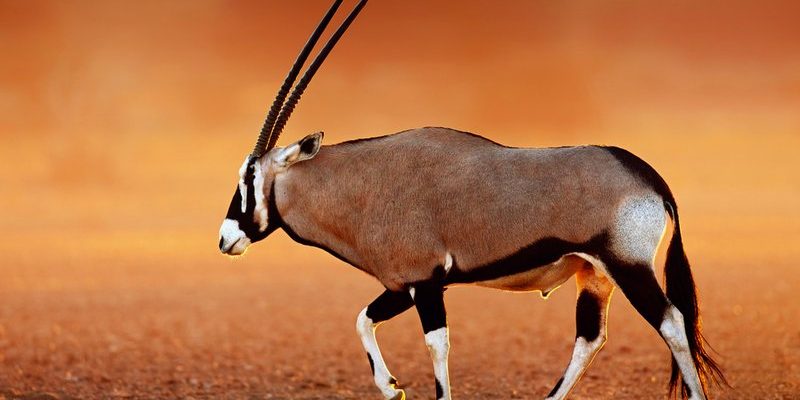![Comparing The Oryx Vs. [Similar Species]](https://gudri.com/wp-content/uploads/2025/06/Comparing_The_Oryx_Vs___Similar_Species__image_0.jpg)
So, why bother comparing these two? Well, knowing the differences can deepen your appreciation for wildlife and help clarify some common misconceptions. Let’s dive into their features, habitats, and behaviors to see what makes each of them special. Grab your favorite drink, sit back, and let’s explore!
Physical Characteristics
When it comes to physical traits, oryx and gemsbok share some similarities but also flaunt distinctive characteristics. Both animals boast long, straight horns, which can grow up to 4 feet long. However, if you look closely, the coloration and markings on their bodies reveal a different story.
The oryx often has a striking coat that’s a mix of white and brown. Its face is usually marked with black stripes, giving it a sharp, elegant look. The gemsbok, on the other hand, tends toward a lighter, sand-colored coat. You might notice that the gemsbok’s markings are similar, but its overall appearance has a smoother transition of colors. This difference can be crucial for identification, especially in the bush.
Beyond just colors, their size can also vary. Oryx tend to be slightly smaller than gemsboks, which can weigh upwards of 500 pounds! So, if you’re out in the field trying to spot them, keep these features in mind. Remember, every detail counts when you’re identifying these beautiful animals.
Habitat and Range
The habitat of these two species plays a significant role in their lives. Oryx mainly thrive in arid regions, such as the deserts of Namibia and Botswana. They’ve adapted well to life in the heat and have developed remarkable survival strategies. For instance, they can go for long periods without drinking water, drawing moisture from the plants they munch on.
In contrast, gemsbok usually prefer semi-desert landscapes with slightly more vegetation. You’ll often find them in places like the Kalahari Desert. The gemsbok has adapted to extract moisture from the grasses and shrubs available to them, allowing them to live in areas that offer a little more cover than the oryx typically seek.
This difference in habitat also affects their daily behaviors. Because oryx are more accustomed to extreme conditions, they often graze during cooler times, like early morning or late afternoon. Meanwhile, gemsboks are a bit more versatile, grazing at various times throughout the day based on the availability of food.
Behavior and Social Structure
Now, let’s chat about behavior. Both of these animals exhibit fascinating social structures that can tell you a lot about their way of life. Oryx are known for their strong social bonds, often forming herds of 10 to 20 individuals. These herds are typically made of females and their calves, while males may join during mating season, showcasing some interesting dynamics.
On the flip side, gemsboks are known to be more solitary or form smaller family groups. They might be seen in clusters of 2 to 5, often consisting of a female and her young. This behavior can be attributed to their different habitats, where resources are a bit tighter.
Here’s the thing: while both animals can seem similar, the way they interact with their environment and each other is quite different. Oryx often rely on their numbers for protection, while gemsboks tend to use stealth and their surroundings to remain undetected by predators.
Diet and Feeding Habits
When it comes to diet, both species are herbivorous and primarily consume grasses, leaves, and shrubs. However, their feeding habits vary slightly due to their preferred habitats. Oryx often graze on tougher, drought-resistant plants that thrive in the desert. They’re masters at survival, feeding on what the environment offers—even if it’s not the most appetizing.
In comparison, gemsboks tend to have a broader diet because their semi-desert environment has a wider variety of plants available. They often enjoy soft grasses and can even eat succulents to stay hydrated. Their ability to adapt their diet can give them an edge in competing with other herbivores.
Interestingly, both species have developed special adaptations to help them get the most out of their food. For instance, oryx have special gut bacteria that help them digest fibrous plants efficiently, while gemsboks have a unique way of foraging that maximizes their nutrient intake.
Conservation Status
The conservation status of both the oryx and the gemsbok varies significantly. Oryx populations have faced severe declines over the years due to habitat loss and hunting. Fortunately, some species, like the Arabian oryx, have seen remarkable recovery efforts through conservation programs, with populations steadily increasing in protected areas.
On the other hand, gemsboks are considered more stable and resilient to environmental challenges. Their populations are relatively healthy, but they still face threats from habitat loss and competition with livestock. Conservation efforts in the regions they inhabit continue to be important to ensure their survival.
By understanding these dynamics, you can appreciate conservation work and why it’s crucial to protect these incredible species. Every effort counts, and educating others about these animals helps raise awareness.
So there you have it! The oryx and gemsbok are both stunning representatives of African wildlife, yet they each have their own unique traits, behaviors, and adaptations that help them thrive in their environments. Whether you’re fascinated by their physical differences, intrigued by their habitats, or passionate about their conservation, there’s so much to learn from these remarkable creatures.
In the end, appreciating these animals goes beyond just knowing their names or how they look; it involves understanding their role in the ecosystem and the challenges they face. By learning about the oryx versus the gemsbok, we can become better stewards of the natural world and advocate for the protection of wildlife. So, the next time you think of these animals, you’ll not only recognize them, but you’ll also have a deeper connection to their story.

